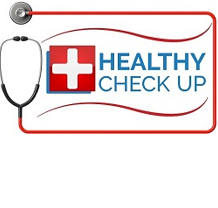5 Most Common Sexually Transmitted Diseases
1) Chlamydia
One of the most common bacterial sexually transmitted diseases (STD) in the United States is Chlamydia, and it can be treated with antibiotics. It is mostly found among people 15-25 years of age. About 3 million people in the US are infected with Chlamydia every year. Usually, infected people do not experience any symptoms at all, so many cases of Chlamydia can go undetected and unreported, but there are about 1 million new cases that are reported annually. A simple urine test can detect this infection in the early stages without any symptoms. Treatment of Chlamydia is necessary to prevent long-term complications and spreading the infection to sexual partners. Chlamydia is often transmitted by sexual contact with the mouth, vagina, or anus of an infected partner.
Risk factors
- co-infection or previous infection with another STD,
- multiple sex partners,
- not using barrier contraception.
- An infected mother may spread the disease to her baby during childbirth. These infants can develop conjunctivitis, an eye infection, and pneumonia.
2) Gonnorhea
A less common sexual transmitted disease is Gonorrhea, which can be easily treated, but when left untreated, it can cause reproductive and other health problems.
The blood test online for this infection is called an RPR, Qualitative that tests for the bacterium which causes syphilis. Syphilis is an infectious disease that is spread by sexual contact with a syphilis sore or chancre, found in the genitalia. Infected pregnant mothers can pass the disease to the fetus, with serious consequences.
3) Hepatitis A, B, C
Hepatitis A
A Virus from a lack of hand washing or food contamination can spread Hepatitis A. This blood test online called, Hepatitis A Antibody IgM Blood Test IgM anti-HAV, tests for antibodies found in a recent infection with the hepatitis A virus. IgM anti-HAV antibodies can generally be detected in the blood as early as 2 weeks after the initial HAV infection. The antibodies will disappear from the blood 3 to 12 months after the infection. IgG anti-HAV antibodies indicate that you have had a hepatitis A viral infection. About 8 to 12 weeks after the initial infection with hepatitis A virus, IgG anti-HAV antibodies will appear and will remain in the blood for lifelong protection (immunity) against HAV.
Hepatitis B
A Virus from direct blood contact through blood contamination from menstruation, sharing shaving razors or toothbrushes can spread Hepatitis B. Hepatitis B Surface Antigen (HBsAg) is a protein antigen that is produced by HBV. It is the earliest indicator of acute hepatitis B and often identifies infected people before symptoms appear.
Hepatitis C
A Virus from direct blood contact through sharing needles when injecting drugs, tattoos, sharing shaving razors or toothbrushes can spread Hepatitis C. The blood test online to check for the presence of hepatitis C is called, Hepatitis C Antibody
4) HIV
The HIV virus is sexually transmitted and then causes AIDS. The blood test online to dected HIV is called, HIV Antigen/AntibodiesTest. This blood test is the recommended standard rapid test for routine HIV Screening. It typically sees quick results in just 1-2 business days and is one of the most affordable HIV tests available. The HIV Antigen/Antibodies test, also known as a 4th Generation HIV Test, looks for both antibodies to the HIV virus and the p24 Antigen which is specific to HIV. Antibodies to HIV typically begin to develop several weeks after exposure. In the majority of people, these antibodies will be detectable by 12 weeks from the point of exposure. In some people, antibodies may be detectable as early as 4 weeks from exposure. The p24 Antigen is a viral protein which makes up the majority of the HIV viral core (capsid). P24 Antigen levels are typically highest a few weeks after exposure and drop to undetectable levels during the time when antibodies begin to develop. The combination of screening for both antibodies and antigen allow this test to detect a higher number of early infections than previous generations of HIV screening.
5) Herpes
Lastly, the second most common sexual transmitted disease is Herpes II. Herpes I is the oral lip lesion that is not sexually transmitted, and may also be due to shingles. Although, it is often beneficial to check for Herpes Simplex Virus (HSV) I and II. Herpes simplex viruses which are more commonly known as herpes, and are categorized into two types: herpes type 1 (HSV-1, or oral herpes) and herpes type 2 (HSV-2, or genital herpes). Herpes type 1 most commonly causes sores around the mouth and lips, sometimes called fever blisters or cold sores, and also occur on any part of the body when you have shingles. Most cases of genital herpes are caused by herpes type 2. In HSV-2, the infected person may have sores around the rectum or genitals. Although HSV-2 sores may occur in other locations, these sores generally are found in the genital area.

